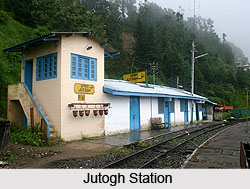 Jutogh is a cantonment town located in Shimla District of the northern state of India, Himachal Pradesh.
Jutogh is a cantonment town located in Shimla District of the northern state of India, Himachal Pradesh.
This town is situated in the west of Shimla at a distance of 7 km. Jutogh was one of the first military cantonments built during the British period. The nearest access points are the airport at Shimla and the Jutogh Railway Station on the Kalka Shimla rail route. Geographically, the town is located between 31.1° North latitude and 77.12° East longitude at an average elevation of 1729 metres (5672 feet) above mean sea level.
The Indian Census report of 2001 puts forward that Jutogh had a small population of 2417. To be specific, males constitute 68% of the population and females account for the remaining 32%. In Jutogh, 10% of the population is less than six years of age. The average literacy rate of Jutogh is 85% which is higher than the national average literacy rate which is 59.5%. Out of it, the male literacy rate is as high as 90% and the female literacy rate is 75%.



















